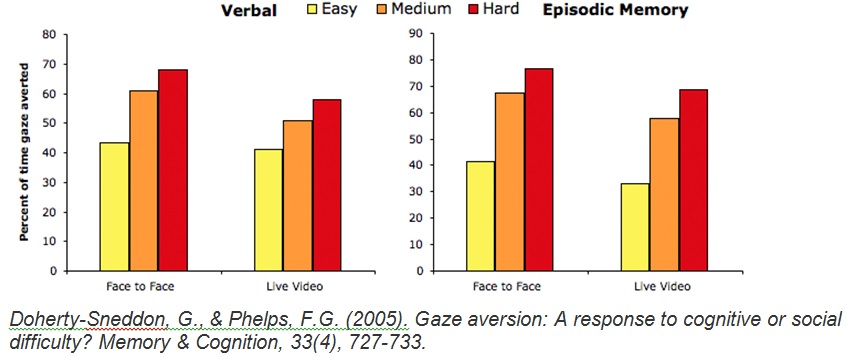“The older I get the less I listen to what people say and the more I look at what they do”. — ANDREW CARNEGIE
The vast majority of feedback in organisations is conducted in writing, and yet we as humans are primarily visual communicators. In everyday conversation our minds rely on facial expression, gestures and pauses to decipher colleagues’ & customers’ emotive states far more than the words spoken.
Written feedback is an inherently pre-meditated, non-reactive and therefore biased form of communication and when it is relied upon, we miss the hesitations, the un-filtered reactions and therefore so much of the true feelings of our respondents.
Gathering feedback on initiatives using video captures all of this expressive language, and uncovers what your team & customers are really thinking to a much higher degree of accuracy. We look into the science of why video works, and what you should be actively aware of when shifting your organisation to a visually communicative feedback system.
A little background: The evolution of visual communication
To be aware of the importance of visual communication, understand that humans evolved as visual & tonal communicators long before we developed the capabilities for structured language. These visual elements evolved originally from non-communicative adaptive functions; for example, the widening of eyes which we associate with fear has been shown to increase the speed of eye movement and increase field of vision – both of which help to find and follow threats. Over time, as we evolved as social animals, these functional adaptations became increasingly distinctive & exaggerated, over millennia eventually becoming our primary communicative function.
We all display & read emotional states via facial expressions, body language and gestures in every interaction we conduct. Infants learn to comprehend facial expression as social cues before they develop language, as early as 7 months old.
How to interpret what respondents are really saying
There are 5 primary visual elements used universally by humans in communication. By being acutely aware of these, you can rapidly improve your ability to interpret what respondents are actually telling you in order to make better decisions.
1. Look into the eyes.
Research has shown that the eyes are the primary facial component to betray true emotions, and you are looking specifically for structure / expression, and directional gaze.
Structure: This is best demonstrated by taking the Well Quiz, developed by Simon Baron-Cohen. This will test your ability to read emotion based on eye expression alone. Your results from static images are likely to fall between 20-30 on the test’s scale. When we move to video, you are now using 1000’s of individual expressive frames, this multitude of data enables you to greatly increase the accuracy of your emotive interpretation – as much as 3 fold (see Harwood, Hall, & Shrinkfield, 1999 for identification of emotions from moving and static videotaped and photographic displays from written and pictorial labels of emotions).
Directional gaze: The direction a respondent looks has no proven bearing on emotive state, however, the act of looking away is proved to be linked to one of the following states:
- Complex thought – difficult topics.
- Deception – lying or sugar coating the truth requires more thought.
- Observation – note if the respondent is interacting with their environment / colleague.
In face to face interviews, respondents may also avoid direct eye contact due to shyness, respect (for instance in Eastern cultures) or insecurity. When moving to live video interviews, this bias is reduced, as shown in the study by Doherty-Sneddon, G. & Phelps below. In our experience removing social pressures completely by moving to one way smartphone video feedback reduces this bias even further.

2. Mouth movement
Humans are the only animal with their lips turned outside the mouth, and this adaptation has evolved to support our communicative needs – expressions such as smiling and pouting, talking and of course kissing.
The six universal expressions shown through the mouth (in between speaking) are:
- Happiness – Smiling, laughing
- Sadness – Lowering of mouth corners
- Surprise – Jaw drops slightly
- Fear – Mouth opens slightly
- Disgust – Mouth opens slightly
- Anger – Lips pressed firmly together
Other subtleties to observe are licking of lips for nervousness, pressing of lips for thought and of course laughter.
3. Significant pauses
Such a key part of communication that is overlooked when gathering written feedback is picking up on what people don’t say, the pauses, the stutters, the hesitations. Writing, unlike speech, lends itself to pre-meditation and error checking of thoughts meaning respondents phrase responses how they believe they should, not how they would.
There are two easily distinguishable reasons for pauses:
Difficulty with clear answers – We see this a lot when brands explore more complex topics with customers and team, such as brand perception & strategy. Clear, concise and well understood brands or topics generally prompt clear responses. In contrast, where brand messaging or strategy is unclear, not only do we generate more varied responses, but also more hesitation and pauses in responses as respondents have to think harder to formulate an answer.
Sugar coating – Team members often “sugarcoat” the truth due to fear of causing discord, or their personality prevents speaking out. Uncovering this in feedback is key, as you want the hard truth to really make better decisions. Take note of:
- Hesitation. Not telling the truth causes more hesitation and stumbles.
- Sudden Pauses. Dishonestly requires more thinking time.
4. Subtle gestures
Gestures are a communication element developed organically, that is, picked up subconsciously from our cultural influence. Some of us are more expressive than others, though there are some general rules for interpretation:
Level of animation: Movement accompanies passion and an increase in gestures therefore accompanies topics that individuals feel more strongly about. Pay attention to these increases, as when your team or customer feels strongly about something, you should too.
Subconscious hand placement: Not an exact science, but research points towards the following:
- Touching nose whilst speaking – lying / exaggeration
- Ear tugging – Indecision
- Stroking chin – Thoughtfulness
- Neck scratching – Doubt / disbelief
- Head holding – Exasperation / distress
- Fist clenching – Anger / Frustration
5. Microexpressions
A microexpression is a brief, involuntary facial expression shown on the face of humans according to emotions experienced. They usually occur in high-stakes situations, where people have something to lose or gain.
Hard to spot and interpret, our advice here would be to simply take notice of any unusual behaviour. To see this in action, take Millward Brown’s Facial coding demo.
6. A note on tone of voice
Not an expression, but a key part of non-written communication (as much as 30%). Tone of voice involves changes in pitch, volume, timbre, speech rate and pauses. Generally extreme emotions are the easiest to pick up such as anger, disgust, fear and sadness.
In summary – trust your instincts, and refine with conscious effort.
The good news is, your brain has been training, daily, to interpret these visual cues over your entire lifetime, and it’s pretty accurate.
Being acutely aware of the above is the best way to improve your emotive interpretation skills. If you want to supercharge your abilities, one of the best pieces of advice is to start watching debates and other filmed interactions with the sound turned off. This method is used by high level investigators who rely on expression almost solely when interpreting interviews and the results can be mind blowing.










